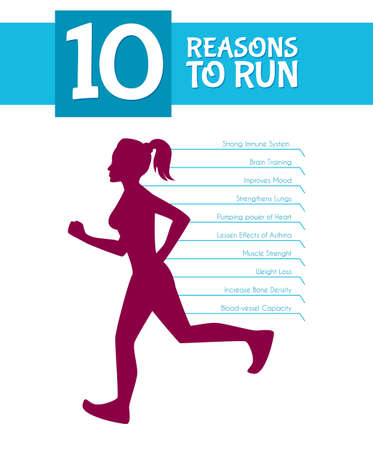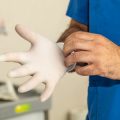Understanding ACL Injuries and UK Recovery Pathways
If you’ve ever twisted your knee awkwardly during a football match or felt an unsettling pop while hillwalking in the Lake District, you might be familiar with anterior cruciate ligament (ACL) injuries. The ACL is a critical stabiliser within the knee, and its rupture is an all-too-common occurrence among Brits—especially those who enjoy sports like rugby, netball, or skiing. In fact, ACL tears are one of the leading causes of knee instability here in the UK, affecting both amateur enthusiasts and seasoned athletes alike.
The journey from injury to recovery can feel daunting, but understanding the typical pathways available across the UK helps demystify the process. Most people start by visiting their GP, who may refer them for further imaging such as an MRI scan to confirm the diagnosis. From there, treatment options depend on several factors: age, activity level, and personal goals play a huge role. Some opt for non-surgical management focused on physiotherapy and functional rehabilitation—particularly if they have lower activity demands. Others, especially those aiming to return to pivot-heavy sports, may require surgical reconstruction of the ligament.
In the UK, patients can access care via the NHS or through private healthcare providers. The NHS offers structured pathways involving orthopaedic consultations and physiotherapy support; however, waiting times for surgery can vary significantly based on location and demand. Private healthcare offers more rapid access to diagnostics and surgical intervention but comes with higher costs. Regardless of route chosen, rehab is always at the heart of successful recovery—a tailored programme designed not just to restore strength and movement but also to rebuild confidence in your knee’s ability to handle whatever life throws at it.
2. Key Phases of Rehabilitation
Understanding the key phases of rehabilitation after an ACL injury is essential for anyone embarking on this journey in the UK. The process is structured but tailored to individual needs, with each stage building upon the last. Below, you’ll find a breakdown of these phases, including typical milestones and what you can expect at each point. Remember, timelines can vary depending on your personal progress and NHS or private physiotherapy protocols.
Early Post-Injury Care (Weeks 0–2)
- Goal: Reduce swelling and pain, protect the knee, restore gentle movement
- What to Expect: RICE protocol (Rest, Ice, Compression, Elevation), basic mobility exercises under supervision, possibly crutches
- Milestones: Swelling begins to subside; able to perform straight-leg raises without pain
Regaining Range of Motion & Strength (Weeks 2–6)
- Goal: Achieve full extension and at least 90 degrees flexion, begin weight-bearing as tolerated
- What to Expect: Introduction of static quads, heel slides, and closed-chain exercises; gradual reduction in assistive devices
- Milestones: Walking unaided with a normal gait; improved muscle activation
Progressive Strengthening & Functional Training (Weeks 6–12)
- Goal: Build strength in quadriceps, hamstrings, and glutes; improve balance and proprioception
- What to Expect: Gym-based rehab if available, step-ups, mini-squats, use of resistance bands; introduction of low-impact cardio like cycling or swimming
- Milestones: Climbing stairs comfortably; single-leg stance maintained for over 30 seconds
Advanced Physiotherapy & Return to Sport (Months 3–9+)
- Goal: Restore agility, speed, and sport-specific movements; psychological readiness for return to play
- What to Expect: Plyometric exercises, running drills, sport-specific training sessions; collaborative decision-making with physio and consultant regarding clearance for return to competitive activities
- Milestones: Completion of functional tests (e.g., hop test); confidence in knee stability during high-level activities
Knee Rehabilitation Stages at a Glance (UK Context)
| Phase | Main Focus | Typical Duration | NHS/Private Milestone Example |
|---|---|---|---|
| Early Post-Injury Care | Pain & swelling management; gentle mobilisation | 0–2 weeks | Straight leg raise without lag; reduced swelling |
| Regain Range & Strength | Knee movement; basic strength-building; weight-bearing progression | 2–6 weeks | No crutches needed for daily walking tasks |
| Progressive Training | Bespoke strengthening; proprioceptive work; return to low-impact activity | 6–12 weeks | Able to climb stairs normally; improved balance tests |
| Advanced Physio/Sport Return | Athletic performance; psychological readiness; final functional assessment | 3–9+ months | Cleared by physio/consultant for sport/work duties |
This phased approach is widely adopted throughout the UK, whether you’re treated via the NHS or privately. Working closely with your physiotherapist—and setting clear expectations at each stage—ensures optimal recovery while minimising setbacks. The British system places significant emphasis on patient education and active participation, empowering you to take control of your rehabilitation journey.

3. Working with Your Physio: The British Approach
When it comes to ACL rehabilitation in the UK, one of the most valuable assets you’ll have is your physiotherapist, often affectionately referred to as your “physio.” Understanding how to collaborate effectively with your physio and navigate the unique aspects of British healthcare can make a real difference in your recovery journey.
The Role of Your Physio in the UK
British physios are highly trained professionals who blend clinical expertise with a holistic understanding of patient needs. From the initial assessment at your local NHS clinic or private practice, they will tailor your rehab plan based on both evidence-based protocols and what’s practical for your lifestyle. It’s common here to focus not just on exercises but also on education—expect plenty of explanations about how each movement supports your recovery and prevents future injury.
Understanding British Rehab Terminology
Getting to grips with local terminology will help you communicate more confidently. For example, you’ll hear “range of movement” (ROM), “weight-bearing status,” and “functional milestones” discussed frequently. Don’t hesitate to ask questions if something isn’t clear—British physios appreciate patients who take an active role and are happy to break things down into plain English.
Making the Most of Local Facilities and Support Networks
The UK offers a variety of rehab settings, from NHS hospitals and community clinics to university sports centres and private physiotherapy studios. Many towns also have support groups or online forums where people share experiences and tips—think knee rehab Facebook groups or local Meetups. Take advantage of these resources; sharing your highs and lows with others on the same path can be both motivating and reassuring.
Ultimately, successful rehabilitation is a partnership. Be open about your goals—whether it’s getting back on the football pitch or simply walking pain-free—and trust that your British physio is there not only for treatment but also as a sounding board during setbacks. With mutual respect, clear communication, and a bit of classic British perseverance, you’ll make steady progress towards full recovery.
4. Daily Living: Getting Back on Your Feet Safely
Recovering from an ACL injury in the UK is about more than physiotherapy sessions—its about reclaiming your independence and navigating daily life with confidence. Here’s some practical, battle-tested advice for managing everyday activities while respecting your knee’s limits during recovery.
Adapting to Everyday Mobility
Whether you’re hopping on a London bus or negotiating the stairs at home, it’s crucial to plan ahead and be patient with yourself. Public transport, for example, can be daunting post-injury. Always check if your local train or Tube station has step-free access; many city centres and larger stations now provide this information online or via dedicated apps.
| Activity | Practical Tips |
|---|---|
| Navigating public transport | – Use lifts where possible – Avoid rush hour crowds – Request priority seating – Let drivers know if you need extra time boarding |
| Climbing stairs | – Take one step at a time – Use handrails for support – Lead with your good leg going up, affected leg going down (“Up with the good, down with the bad”) |
| Walking outdoors | – Stick to even pavements – Wear supportive footwear – Plan routes with benches for rests – Watch out for wet or icy surfaces typical of British weather |
Returning to Work or Studies
Getting back into work or university life takes communication and honest assessment of your physical capabilities. Under UK law (Equality Act 2010), employers and educational institutions have a duty to make reasonable adjustments. Don’t hesitate to ask for:
- Flexible hours or phased return
- Remote working options (if feasible)
- Temporary desk relocation closer to facilities like toilets or lifts
Your Rights & Support Network
If you’re unsure about workplace accommodations, seek guidance from your HR department or university disability services. Many workplaces also have Occupational Health teams who can recommend specific adaptations tailored to your needs.
Mental Resilience: A Personal Note
From my own experience, the hardest part was not just the physical hurdles but managing the frustration and impatience that comes with slow progress. Celebrate small wins—whether it’s getting up the stairs unaided or making it through a lecture without discomfort. Remember, rehab is a marathon, not a sprint, and leaning on friends, family, and NHS support groups can make all the difference as you gradually reclaim your everyday routine.
5. Sport, Exercise, and Getting Active Again
Returning to Your Favourite Activities
After an ACL injury, the journey back to sport and exercise is both exciting and daunting. In the UK, where community fitness culture thrives—whether it’s a kickabout in the park, a five-a-side league, or a Parkrun on Saturday mornings—returning safely requires patience and planning. The first step is always clearance from your physiotherapist or orthopaedic consultant. From there, gradually reintroduce activities that challenge your knee while keeping within safe boundaries.
Tailoring Rehabilitation to Popular British Sports
If you’re keen on football, rugby, or netball—some of Britain’s most beloved sports—it’s crucial to focus on agility drills and lateral movement exercises once foundational strength and stability have returned. Cricket players might prioritise rotational control and single-leg balance, while runners should build up distance slowly, starting with walk-jog intervals on flat ground before tackling hills or trails.
Community Fitness and Support
The UK boasts a strong sense of community around sport and fitness. Local leisure centres offer low-impact classes like swimming or yoga, which are excellent for maintaining cardiovascular health without overloading your knee. Don’t underestimate the value of joining a local walking group or cycling club; these social settings provide encouragement and accountability during your recovery.
Tips for a Safe Return
- Listen to your body: Mild soreness is normal but sharp pain isn’t—never push through significant discomfort.
- Focus on form: Prioritise technique over intensity in every session, especially during agility or plyometric work.
- Use proper kit: Supportive trainers, knee sleeves, or braces can offer extra confidence in early stages.
- Pace yourself: Set realistic milestones (e.g., joining training before returning to full matches) and celebrate progress along the way.
Re-entering sport after ACL rehab in the UK isn’t just about physical readiness; it’s also about reconnecting with your community and regaining confidence. Embrace the journey—your resilience will inspire those around you as much as your performance on the pitch or track.
6. Mental Health, Motivation, and Support Resources
Maintaining a Positive Mindset During ACL Rehabilitation
Recovering from an ACL injury is as much a mental challenge as it is a physical one. It’s perfectly normal to experience highs and lows throughout your rehabilitation journey, especially as progress can sometimes feel slow or setbacks occur. Maintaining a positive outlook is vital. Setting achievable goals, celebrating small victories, and keeping your long-term recovery in mind can help you stay motivated. Many in the UK find that journaling their experiences or practising mindfulness techniques, such as meditation or guided breathing exercises, helps manage anxiety and frustration during the ups and downs of recovery.
Dealing with Emotional Ups and Downs
The emotional impact of an ACL injury can be underestimated. It’s common to feel isolated, frustrated, or even anxious about returning to sport or daily activities. Remember: these feelings are valid, and you are not alone. Talking openly with friends, family members, or your physiotherapist about your concerns can provide much-needed reassurance and perspective. For those struggling with motivation, creating a routine that includes both rehab exercises and enjoyable activities outside of rehab can break up the monotony and bring balance to your days.
Mental Health Resources Across the UK
The UK offers a range of mental health services tailored for individuals dealing with injury-related stress. The NHS provides free access to counselling services through your GP or local Improving Access to Psychological Therapies (IAPT) programmes. Charities such as Mind (mind.org.uk) and Samaritans (samaritans.org) offer helplines and online resources for emotional support. Some local football clubs or sports teams also have welfare officers or sports psychologists who understand the unique pressures faced by injured athletes.
Peer Support and Community Networks
Connecting with others who have gone through similar injuries can be incredibly helpful. Online forums like the UK-based Patient.info ACL forum, social media groups, or local support meetings offer spaces to share advice, encouragement, and lived experiences. Many find that hearing from others further along in their recovery journey boosts morale and confidence in their own progress.
Final Thoughts on Wellbeing Through Rehabilitation
ACL rehabilitation is rarely a straight line—there will be bumps along the way. By looking after your mental health, seeking out support networks, and using available resources across the UK, you’ll build resilience alongside physical strength. Remember: asking for help is a sign of strength, not weakness. Keep faith in the process and reach out whenever you need support—you’re not alone on this journey.


